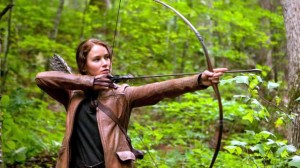As I sit in a meeting discussing next years digital/social media strategy…I feel hints of my old days sitting in those morning editorial meetings as a journalist. Every morning, we talked about the stories of the day, relevance to the audience, timelines, how to tease, and how to cross promote.
Large organizations are no longer structuring new media & social media strategies…they are online content creators and providers. In the age of digital media…it is no longer about delivering content, it is sharing content. Big difference. Delivering and sharing are two completely different models and mind sets.

As you read the article…this digital distribution strategy is more than just an editorial calendar, it is a timeline associated to digital scavenger hunts using Twitter; cultivating fans to take part in a virtual world like the movie Hunger Games.
We are moving past exploration…it is no longer about just creating a Facebook page, a Twitter account, a YouTube channel…we are in the age of engaging conversations and learning we must let the audiences guide us. It is no longer about using social and digital outlets to just post content and hope the audiences will come…more about how can we cultivate conversations.
Now, I know I am sharing what we already know…but do we really? We are still creating post card websites, YouTube channels full of content that no one will watch, Twitter feeds with little interaction. Large hospitals all over have numerous pages for no other reason than pleasing another department and hoping they are updating the page in three months. I have them in my newsfeed, numerous hospitals and none of them make me want to click…AT ALL. Or is that the point?
My colleague Reed Smith, who helps manage social and digital efforts for numerous healthcare organizations in Texas, shared some insight from his conversations with many of his counter parts from other hospitals during the social conference at the May Clinic. He explained that many large hospitals are dealing with the same situation…learning how to deal with digital and social efforts in a 2.0/3.0 world. Lots of departments, services lines, physician practices want to take part in the social space yet have a hard time living up the true burden, how to truly engage their audiences. Lots of spaces, lots of websites, lots of social accounts…leading to a house of brands.
Vanderbilt University Medical Center shares their social/digital tool kit online…funneling people inside the hospital to this site who are interested in having a social presence. If you want to join in the conversation…you must fill out the form. Cool tool kit…but it is more than a checklist…it is a culture.
Dr. Wendy Sue Swanson is a pioneer in this space, leading us down a path of understanding how to integrate the social space into the daily routine of a physician.
As stated in an opinion article from the LATimes:
“The problem, Swanson said at the South by Southwest conference Sunday, is that insurers won’t pay for the videos she creates to educate patients or the blog posts she writes about important new developments in pediatric care. No matter that these steps would lead to healthier patients who place fewer demands on the healthcare system.
She does them anyway, but the idea of communicating online with patients is anathema to her fellow doctors. “There’s an overwhelming climate of fear” among physicians, she said, about the liability they may incur or the privacy violations they might commit if they respond to emails or write blog posts about medicine.”
We are our own news organizations. We are taking control of our content…but are we building communities? We can find metrics for success by building fan bases, creating social strategies to sell services? But are we really measuring success or just graphing some numbers to make ourselves feel better? Better that we are empowering our organizations as we take control of our content?
I asked my wife today, why would you want to follow a healthcare organizations fan page? What would you want to get from that experience? She wants information that she can use, invitations to events to educate her about our child’s care. Relevant services that make sense to her daily life. No where did she say she wanted to see awards of recognition as a top hospital, best “this” and best “that”…she wants information that make sense to her.
I think I have to agree with Dr. V’s thinking:
“I can’t help but wonder if we’re in the midst of a social health correction – a readjustment of expectations and beliefs about the near-term potential of social media to revolutionize health.”
And I love this as he continues…
“We created filter bubbles that allowed us to hear the messages of those telling us precisely what we wanted to hear. We saw the rise, plateau, and ultimate dissolution of social media consultants who would save us by telling us how to correctly use Twitter.”
It is time to move on and actually start engaging our tribe before we loose what we supposedly built over the last few years. It is time to consolidate, focus, and have a conversation with those who are our brand ambassadors. These social/digital outlets cannot save us..especially when all we do is use those channels/outlets as a one directional conversation and push our stuff. If we want to be a newsroom, content providers…it better be relevant or it will diminish faster than many traditional news outlets.
